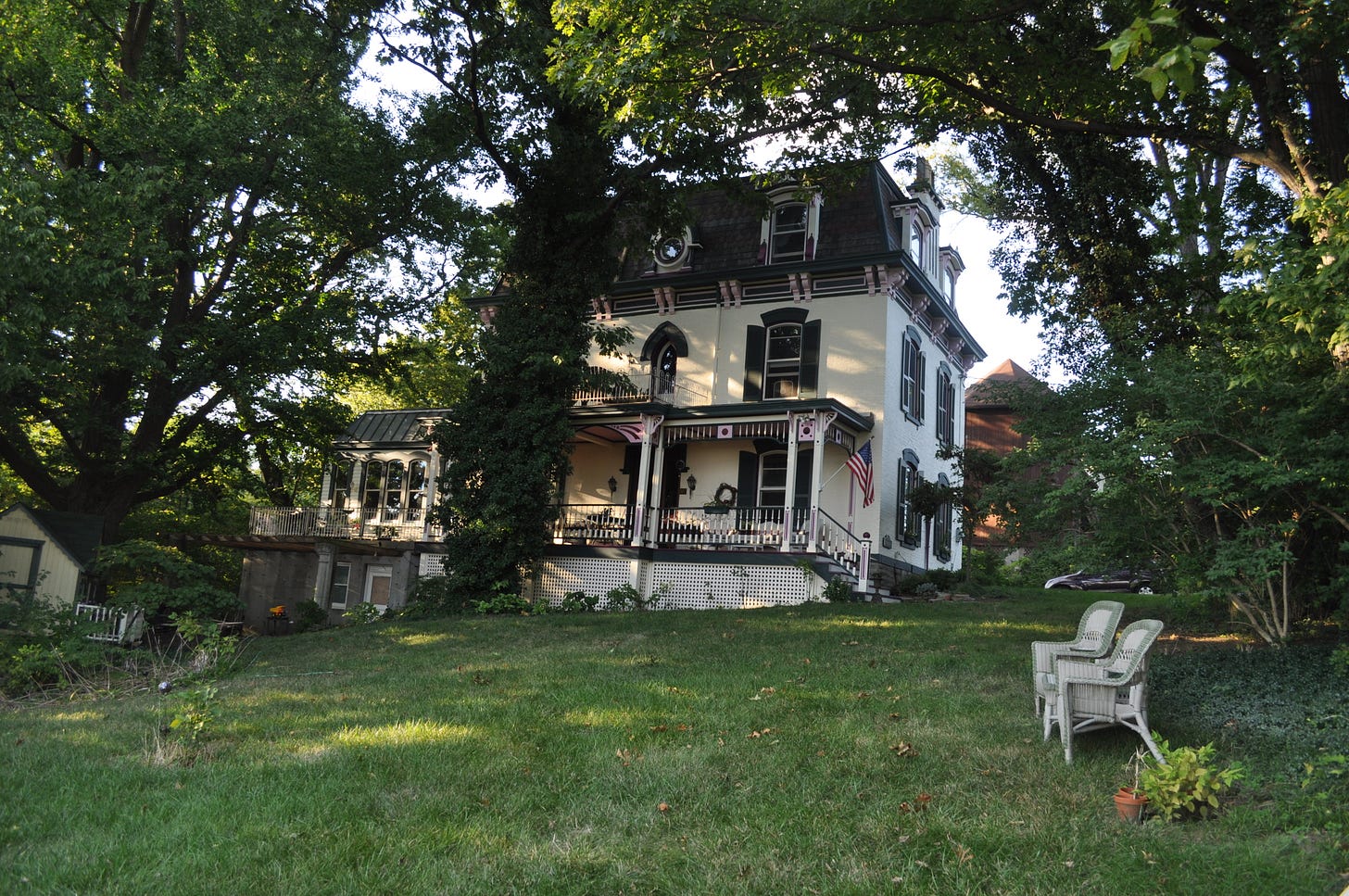If you build it, will they come?
I’ve been a hands-on ‘maker’ my entire life. It’s my nature. Where other people simply see what is there, I examine how it got there. Who made it, how, and with what materials? I am expert, without really trying, at the construction techniques that have been used throughout history. I know when and why steel began to replace stone as a building material. I’ve seen the progression of home products being made of wood, and then metal, and then plastic. Of course, today, all three are used, each for their own reasons. Others see the product; I see the why. I see its place in history.
And I can see how our architecture has degenerated from the impressive Victorian, Art Nouveau and Art Deco designs of previous times, down to today’s ‘Big Boxism’. Books have been written about this, and I can fit little of it this space, but here’s a few observations.
Yesterday, I read a very interesting column in Noah Smith’s Noahpinion Substack (link below), and it inspired this essay. I’ve been ‘going to’ write this eventually, but Noah gave me a kick in the pants to get me going. The column in Noahpinion Substack is more about the problems with financing construction, but it also makes mention of the difference in the final result, based on whether a project is built by a well financed, well organized developer, or by a family-based builder. Even without thinking about it very hard, you might expect the big organization to build a big building with no distinctive features, ‘economized construction’, and with a look that reveals that it was designed and built by a committee. And you might expect the building built by a family of builders to show individuality, with extra ‘not economized’ features, and which was designed by real people and not committees. And in my experience, you would be right.
That shouldn’t be surprising, of course. But consider that, in the past, mega developers didn’t exist. Sure, huge public projects like dams and colosseums got built, but most construction was by small businesses. Skyscrapers didn’t start getting built until the early 1900s. That’s when steel production techniques (Bessemer furnace) were developed that could provide the massive amounts of steel that were required. The engineering ability had existed, it was the steel that was lacking. I feel certain that the Eifel tower was built by Gustave Eifel as a demonstration to the public of the wonders, and heights, that could be achieved by steel. Oh, and someone needed to invent elevators. Skyscrapers are the reason we have elevators.
But I digress. Again. In the nineteenth century, bigtime developers largely did not exist. Construction was more individual, less cookie-cutter. I’ve seen that, in colonial times, there was almost no standardization. So, while there is some commonality to the homes, they are very individualistic. Every board was hand cut and hand shaped. And that meant that the craftsman doing the work could do his own interpreting and expressing. I like that, don’t you?
In the nineteenth century, especially after the civil war, things began to standardize. Lumber was run through mills, and there was no longer an individual expression. We start to see entire neighborhoods with the same moldings, same door styles, etc. Yet, there was still room for individual expression. The craftsmen still existed who could make just about anything custom and work it into the construction. The Biltmore House comes to mind. Not that it is in any way a typical house, but the builder brought in European tradesmen specifically for their knowledge and experience in traditional building techniques.
My very old neighborhood, like many in America, is under assault by the nearby university. One hundred year old homes, considered by many to be ‘past their prime’, are torn down to build what I call ‘student warehouses’. They are comfortable enough. More comfortable, frankly, than the dorms I lived in back when. But they are devoid of personality or individuality. Homes that were built by people, not just as a means for shelter but as a means of expression, are bulldozed in order to make standardized housing. I have the uneasy feeling that we are likewise getting standardized education. One size fits all. Don’t make the education fit who you are, make who you are fit the education.
Some people say, ‘don’t fall in love with a home’ because you will make unfortunate choices. Maybe, by the same token, you shouldn’t fall in love with your spouse. Just kidding. Just making a point. I fell in love with this house. I saw what it had been, and what it could again be, rather than merely seeing what was there. Others who had considered buying the property intended to tear down this old eyesore and start from scratch with modern, standardized construction. I didn’t. As Robert Frost once said, ‘That has made all the difference.’
I know from experience: When something is largely handmade, the extra time that it takes to make it unique and special isn’t all that great, as a percentage of overall time. But when products go down an assembly line, individual expression becomes impossible and expensive as an overall percentage. Thus, individual expression falls by the wayside. I think we all have a sense of that, even if many can’t articulate it. Since the post civil war period, we have gone from nearly everything being handmade, to nearly nothing being hand made. The efficiency of manufacturing allows for us to have far more stuff, but it is far less personal. We don’t hear ‘my grandfather made that’ as much as we used to. Maybe, when you get down to it, we don’t have more; we have less.
Noahpinion/Coby Lefkowitz-Why small developers are getting squeezed out of the housing market
Link to my book, Elysian Place, A Family Renovation:
Elysian Place, A Family Renovation
Comments?








Nice article. Was pondering why building a house so expensive now although have so much “progress”. I asked my nephew who is a builder and he said it just is. Labor materials regulations. Permitting can take years especially if not standardized
So is there progress? From engineering standpoint it seems not.